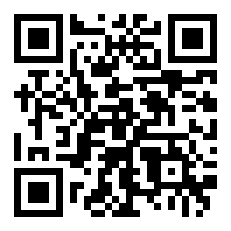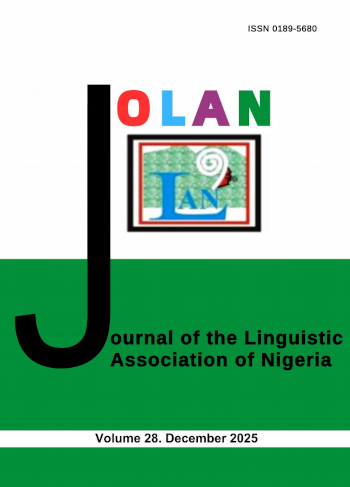Mandarin Chinese as a means to China’s Soft Power
Keywords:
China, Mandarin Chinese, Confucius Institute, Soft powerAbstract
Since China’s rise to the economic, political and military power, she has made efforts to project soft power around the world. Soft power is the ability to get other people to want what you want without having to force their compliance and cooperation. China knows that building a linguistic bridge linking her to the rest of the world has benefits and therefore wants to gain influence on the world’s political and economic stage through the promotion of Mandarin Chinese as a global language. There is an increasing demand for Mandarin Chinese learning around the world, thus the establishment of the Confucius Institute to meet up with the demand. It is the objective of this research to highlight the importance of Mandarin Chinese to China’s soft power. This paper argues that Mandarin Chinese is a means to China’s soft power using soft power as a theoretical framework. This is a qualitative research with secondary data from the library, published papers and internet. The paper finds out three major things. First, China shifted to soft power strategy after the opening-up era in order to achieve a peaceful rise. Second, China establishes Confucius Institutes around the world to market Mandarin Chinese and influence the world positively using soft power strategy. Third, China’s soft power strategy is gaining momentum but not without some challenges.
References
Bergsten, C.F. et’al. (2006). China: The Balance Sheet: What the world needs to know about the emerging superpower. New York: Random House.
Bianco, J. (2007). Emergent China and Chinese: Language planning categories. Language policy, 6 (1), pp. 3-26.
Biswas, A.K. & Tortajada (2018). “China’s soft power is on the rise”. China Daily. www.chinadaily.com.cn/a/2018/2/23/WS5a8f59a9a3106e7dcc13d7b8.html
Chinadaily, (2017, October 7). Over 500 Confucius Institutes founded in 142 countries, regions. www.chinadaily.com.cn/china/2017-10/07/content_32950016.htm
Chinahighlights, (n.d.). The History of China: Over 3,000 years of Civilization. https://www.chinahighlights.com/travelguide/culture/china-history.htm
China Post, (2014, October 1). “World should watch for Confucius”. Retrieved from https://en.m.wikipedia.org/wiki/Confucius_Institute#cite_ref-14
Codevilla, A. (2008). Political warfare: A set of means for achieving political ends. In J.M. Waller (Ed.), Strategic influence: Public diplomacy, counter propaganda and political warfare (pp. 206-223). Washington: IWP Press.
Crystal, D. (1987). The Cambridge Encyclopedia of Language. Cambridge: CUP
Ding, S. and R. Saunders (2006). Talking up China: An analysis of China rising cultural power and global promotion of the Chinese language. East Asia,23 (2),3-33. https://doi.org/10.1007/s12140-006-0021-2.
Economy, L. (2016). “Is China’s soft power strategy working? China Power, February 27, 2016”
https://chinapower.csis.org/is-chinas-soft-power-strategy-working/
Gill, J. (2008). The promotion of Chinese language learning and China’s soft power. Asian Social Science, Vol. 4, No 10. Retrieved from http://dx.doi.org/10.5539/ass.v4n10p116
Guo, S. (Ed.). (2007). China’s ‘Peaceful Rise’ in the 21st Century: Domestic and International
Conditions. Burlington, VT: Ashgate Publishing Ltd.
Hao, Y. et al. (2010). Non-native Chinese language learners’ attitudes towards online vision-based motion games. British Journal of Educational Technology, pp.1-11.
Harris, S. (1995). Introduction: Reading the Chinese tea leaves. In S. Harris & G. Klintworth (Eds.), China as a great power: Myths, realities and challenges in the Asia-Pacific region (pp. 1-18). Melbourne: Longman.
Jianguo, C., Chuang W., & Jinfa C. (Eds.). (2010). Teaching and Learning Chinese: Issues and Perspectives. Charlotte, N.C.: Information Age Publishing.
Keohane, R. O. & Nye, J.S. (1977). Power and Interdependence: World Politics in Transition. Boston: Little, Brown & Co.
Kumaravadivelu, B. (2012). “Global Mandarin: Promoting Chinese Language and Culture in an Age of Globalization”. Journal of Chinese Language Studies, Vol. 8, December 2012, pp.1-7.
Kurlantzick, J. (2006). China’s Charm: Implications of Chinese soft power. Carnegie Endowment Policy Brief, 47, June 2006, pp. 1-7.
Kurlantzick, J. (2007). Charm Offensive: How China’s ‘Soft Power’ Is Transforming the World. New Haven: Yale University Press.
Lee, S.W. (2011). “The theory and reality of soft power: practical approaches in the East Asia. In: Lee, S.W., Melissen, J. (Eds). Public diplomacy and soft power in East Asia. Palgrave Macmillan Series in Global Public Diplomacy. Palgrave Macmillan, New York”.
Mair, V.H. (1991). “What is a Chinese “Dialect/Topelect”? Reflections on some key Sino-English linguistic terms”. Sino-Platonic Papers, 29: 1-31.
Mattis, Peter (2012). “Reexamining the Confucian Institutes”. The Diplomat. https://thediplomat.com/2012/08/reexamining-the-confucian-institutes/
Ministry of Education, (2007, September 6). A Brief Introduction of Teaching Chinese as a Foreign Language. (TCFL) of China. http://www.moe.edu.cn/english/international_11.htm
Norman, J. (1988). Chinese. Cambridge: Cambridge University Press.
Nye, J. (1990). Bound to Lead: The Changing Nature of American Power. New York: Basic Books.
Nye, J.S. (2004). Soft Power: The Means to Success in World Politics. New York: Public Affairs.
Nye, J.S. (2011). The Future of Power. New York: Public Affairs.
Nye, J.S. (2012). “Why China is weak on soft power” .
https://www.nytimes.com/2012/01/18/opinion/why-china-is-weak-on-power.html?_r=0
Penn, B. (2014, April 16). “China Business: A broader education”. The New Zealand Herald.
http://www.nzherald.co.nz/business/news/article.cfm?c_id=3&objectid=11238085
Ramzy, A. (2006). Get Ahead, Learn Mandarin. Times Magazine, June 26, 2006. http://content.time.com/time/world/article/0,8599,2047305,00.html
Sahlins, M. (2013, October 30). China U.: Confucius Institutes Censor Political Discussions and
Restrain the Free Exchange of Ideas. Why, Then, Do American Universities Sponsor
Them?. The Nation. : www.thenation.com/ article/176888/china-u#. 15.
Shambaugh D. (2015), China’s Soft-power Push. Foreign Affairs. https://www.foreignaffairs.com/china/2015-06-16/china-s-soft-power-push
Shaohua, H. (2006). “Revisiting Chinese Pacifism”. Asian Affairs, Vol. 32, No 4 (Winter, 2006), pp. 256-278.
Shaum B. (2011). The Soft Notion of China’s ‘Soft Power’. Asian Programme Paper. Chatham House, London.
Starr, D. (2009). Chinese Language Education in Europe: Confucius Institutes. In European Journal of Education, Vol. 44, No. 1, pp. 65-82.
Sun, J. (2000). Economic History of China, Vol 2 (1840-1949). China People’s University Press The Economist, (2009, October, 22). A message from Confucius: New ways of projecting soft power. https://www.economist.com/special-report/2009/10/22/a-message-fromConfucius
The Economist, (2011, January 20). China’s Confucius Institutes Rectification of statues.
https://www.economist.com/blogs/asiaview/2011/01/china’s_confucius_institute
Torres, D. (2017). “China’s soft power offensive”. China looks West.
www.politico.eu/article/china-soft-power-offensive-confucius-institute-education/
Treverton, G.F. & Jones, S.G. (2005). “Measuring national power”. Rand National Security Research Division Conference Proceedings (Santa Monica CA: RAND Corporation,2005, p. 17). USC Center on Public Diplomacy. www.softpower30.com
Yasushi,W. & McConnell, D. (2008). “Soft power superpowers: cultural and national assets of Japan and the United States”. New York: M.E. Sharpe.
WEBSITES
https://en.oforddictionaries.com/definition/power
https://en.wikipedia.org/wiki/Soft_power
https://en.wikipedia.org/wiki/Standard_Chinese
www.internationalrelations.org/soft-power/














